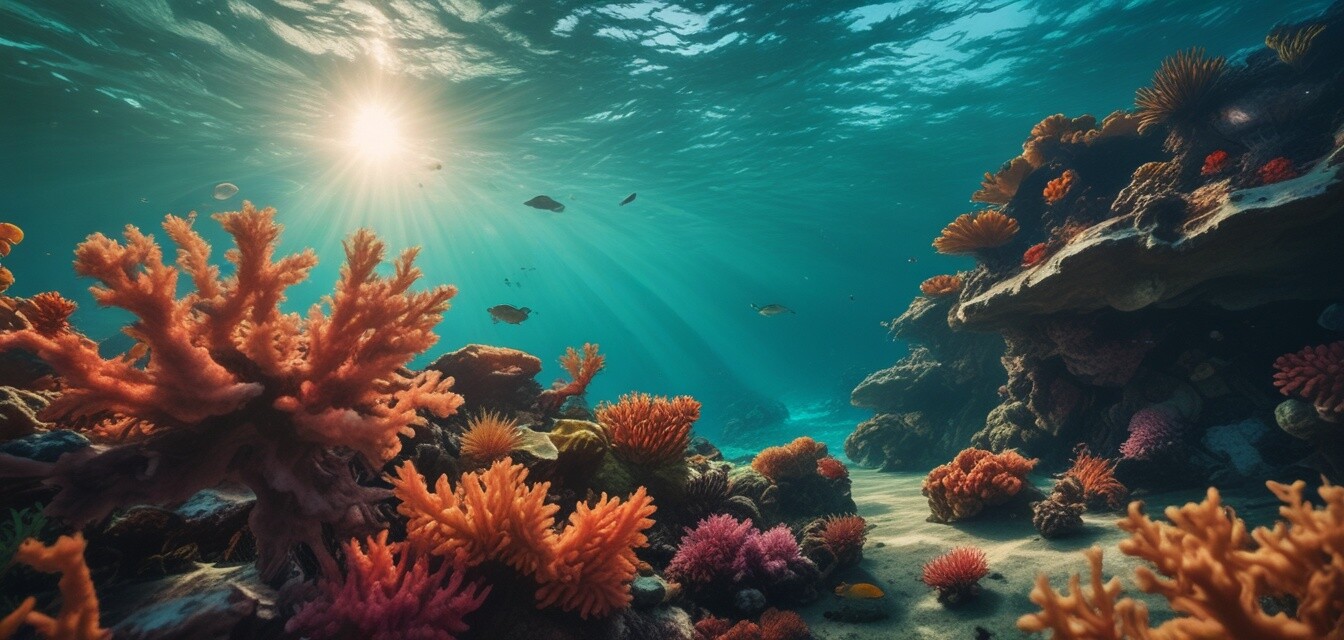
How to Use Natural Sunlight for Underwater Photography
Key Takeaways
- Utilizing natural sunlight can enhance the colors and clarity of underwater images.
- The time of day significantly affects the quality of sunlight underwater.
- Experimenting with angles and positioning can create stunning light effects.
- Mind the water conditions; clear water enhances light penetration.
- Understanding camera settings is crucial for capturing the best photographs.
Underwater photography is a mesmerizing art that allows you to capture the beauty of aquatic life. One of the most powerful tools at your disposal when photographing underwater is natural sunlight. Leveraging sunlight effectively can significantly improve your images, enhancing the colors and textures of your underwater scenes. In this article, we will explore the benefits, techniques, and some tips for using natural sunlight in underwater photography.
The Benefits of Using Natural Sunlight
Using natural sunlight for underwater photography offers numerous advantages.
- Color Enhancement: Natural sunlight brings out vibrant colors, especially reds and oranges, that might otherwise appear muted without artificial lighting.
- Soft Lighting: The diffusion of sunlight provides a natural, soft light, reducing harsh shadows and creating a more pleasing image.
- Less Equipment: Relying on sunlight eliminates the need for complex lighting setups, making your underwater photography outings simpler.
- Environmental Aesthetics: Sunlight adds an ethereal quality to your images, showcasing the beauty of the underwater world as it naturally appears.
Understanding Light Penetration
Light behaves differently underwater compared to land. Here are some key points to keep in mind:
| Depth | Light Quality | Color Spectrum |
|---|---|---|
| 0 - 10 feet | Bright and clear | Most colors visible |
| 10 - 20 feet | Good but decreasing | Reds and oranges start to fade |
| 20 - 30 feet | Dim light | Only blues and greens are prominent |
| 30+ feet | Very limited | Mostly blue shades |
Best Times for Underwater Photography
The time of day plays a crucial role in the effectiveness of natural sunlight in your images. Here’s how the sun’s position affects the underwater environment:
- Midday: Light is intense, creating stark shadows. A good time for capturing vibrant colors at shallow depths.
- Early Morning and Late Afternoon: Soft, warm light is ideal for capturing mood and depth, reducing harsh highlights.
- Overcast Days: Clouds diffuse sunlight, useful for even lighting but can result in cooler color tones.
Techniques for Using Natural Sunlight
Below are some techniques to maximize the impact of sunlight in your underwater photography:
1. Positioning and Angles
Experiment with different angles to capture the sunlight filtering through the water:
- Try shooting towards the light to create a backlit effect.
- Use side lighting to add depth and texture to the scene.
- Finding the right angle can create captivating rays and highlights.
2. Choosing the Right Settings
Understanding your camera settings can make a world of difference. Here are some suggestions:
- Aperture: A wider aperture (lower f-stop number) will let in more light, which is beneficial in darker underwater conditions.
- Shutter Speed: Adjust your shutter speed based on light conditions; faster speeds freeze motion but may reduce light intake.
- ISO: Increasing ISO can compensate for low light, but be careful to avoid grain.
3. Use Filters
Consider using filters to enhance colors and improve image quality. Red filters can be particularly effective in bringing back lost reds and oranges captured deep underwater.
Water Conditions Matter
The clarity and content of the water greatly impact how light transmits:
Tips for Clear Water Conditions
- Choose dive sites known for clarity.
- Avoid diving after heavy rain when visibility may be poor.
- Consider diving in areas with minimal boat traffic.
Post-Processing Techniques
Even after capturing the perfect underwater shot, post-processing can enhance the image further:
- Adjusting White Balance: Ensure colors look natural and vibrant.
- Contrast and Brightness: Fine-tune these settings to bring out details affected by depth.
- Saturation: Carefully increase saturation to make the colors pop, but avoid overdoing it.
Final Thoughts
Using natural sunlight effectively can elevate your underwater photography to new levels. With the right timing, positioning, and camera techniques, the beauty of the underwater world can be captured in stunning detail. For more tips and tricks, check out our other resources on underwater photography techniques and underwater cameras to help you make the most of your underwater adventures!
Pros
- Enhances natural colors without the need for artificial light.
- Reduces equipment complexity, making it easier to shoot.
- Creates ethereal lighting effects, enhancing image quality.
Cons
- Color loss occurs at greater depths, limiting opportunities.
- Variability in water conditions can disrupt planning.
- Timing and location must be carefully considered to maximize light quality.

